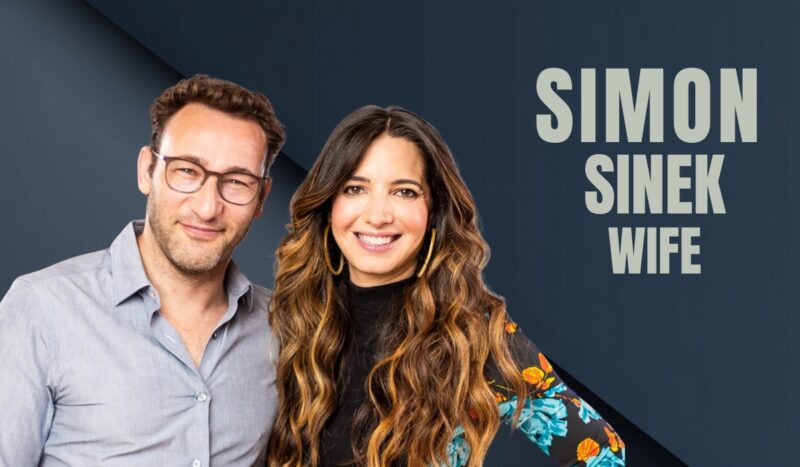Dressing for a professional photo session goes beyond choosing stylish clothes; it’s about communicating confidence and authenticity.
What you wear can influence posture, expression, and the overall tone of your images.
The right outfit helps you appear approachable while still maintaining a professional edge.
Finding the balance between polished and personal style is key. When you feel comfortable and look like yourself, every photo reflects confidence and ease.
The goal is simple: appear confident, comfortable, and authentic, and be the best version of yourself.
Start with Comfort: The Foundation of Natural Photos
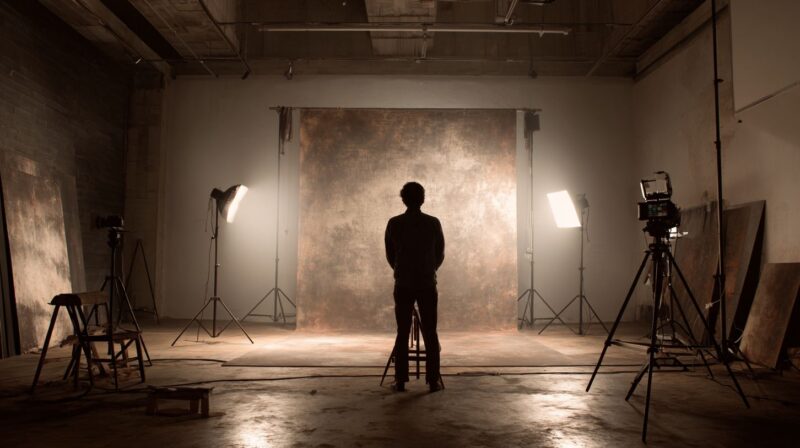
Feeling comfortable in your clothing is the first step toward looking natural and confident on camera.
When your outfit fits well and allows freedom of movement, your expressions and posture reflect ease and authenticity.
Every genuine smile, relaxed stance, and confident gaze begins with physical comfort.
A stiff collar, tight waistband, or ill-fitting jacket can make you feel restricted, leading to awkward poses or tense expressions.
Comfort should never be underestimated in achieving a natural, effortless look.
Fit plays an essential role in how your outfit presents itself on camera.
Clothing that is too tight can reveal discomfort and tension in your body language, while garments that are too loose may look unstructured and sloppy.

Striking a balance ensures you feel confident and composed. Choose pieces that sit well on your frame without constraining movement or creating unflattering lines.
Mobility is often forgotten when preparing for a photoshoot, especially if the session includes movement-based or lifestyle poses.
Being able to walk, sit, or turn comfortably without readjusting your clothes makes a visible difference in the final shots.
Light, breathable fabrics support natural gestures and prevent stiffness during long sessions. A relaxed outfit allows your true personality to come forward effortlessly.
Here are several key reminders to keep in mind before choosing your outfit:
- Choose breathable fabrics that move with your body.
- Avoid tight waistbands, collars, or sleeves that limit flexibility.
- Ensure clothing allows full range of motion for lifestyle or candid shots.
- Try sitting, walking, and turning in your chosen outfit before the shoot.
- Focus on fit, comfort, and freedom over trend or formality.
- Feeling comfortable in what you wear ensures that confidence radiates through every image.
Styles and Cuts That Flatter
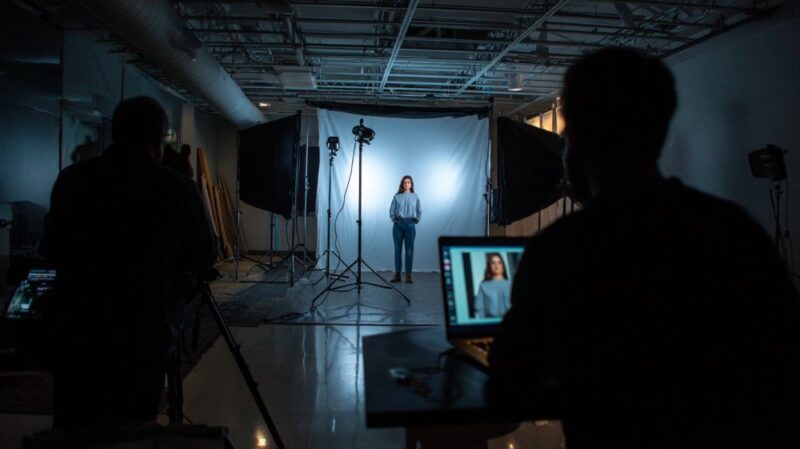
Proper styling and cut selection help enhance posture and create visual balance in photos. Tailored shapes define the body without restricting it, ensuring that confidence remains effortless.
Every neckline, sleeve, and layer contributes to the overall impression you project.
Tops and Necklines
Choosing the right neckline can make a significant difference in framing the face and elongating the neck.
Structured tops or tailored blouses emphasize clean lines and polish.
Avoid extremes, too high or too low, since both can disrupt visual proportion.
Consider these flattering options:
- Modest V-necks for elongation and balance.
- Crew necks or boat necks for classic framing.
- Button-downs or blouses that fit neatly at the shoulders.
Structured tops help maintain a professional image without stiffness or discomfort.
Sleeves
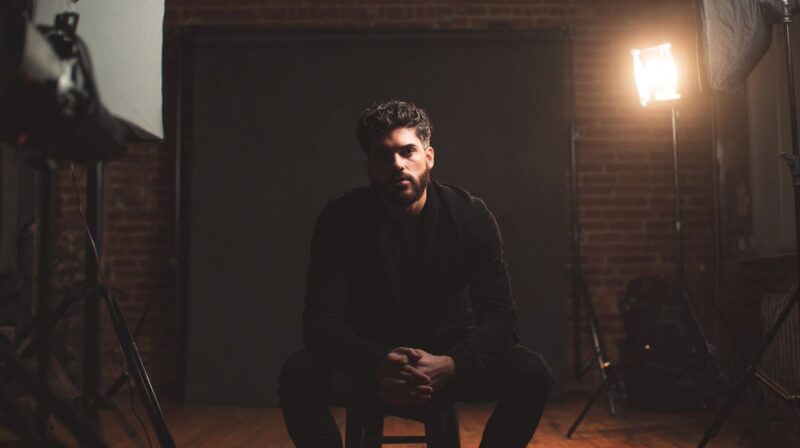
Sleeves contribute to overall proportion and tone. Longer lengths appear professional and can help elongate the arms visually.
Bare arms may catch glare, while three-quarter or long sleeves create an elegant, balanced silhouette.
Guidelines for sleeve choices include:
- Opt for long or three-quarter sleeves for refinement.
- Pair sleeveless tops with a jacket or cardigan if necessary.
- Avoid very short sleeves in bright lighting to reduce skin glare.
Sleeves also give flexibility for layering, allowing quick style adjustments during the shoot.
Layers for Versatility
Layering adds adaptability and depth to your look. Structured outerwear like blazers or light jackets can transform a simple base outfit into a polished ensemble.
Mixing tones, lighter inside, darker outside, creates balance and visual hierarchy.
Effective layering tips:
- Combine light inner layers with darker outer pieces.
- Use structured pieces such as blazers or jackets for definition.
- Prepare alternate outer layers for variety in photos.
Layers not only add sophistication but also help you adjust easily to different backdrops or lighting conditions.
If you need help choosing the right backdrops for your photo session, then be sure to check out the hand-painted backdrops from Gravity Backdrops.
Choosing the Right Colors
Selecting the right color palette sets the tone of your photos and enhances your natural features.
Color choice affects not only how you look but also how your personality is perceived in professional imagery.
A well-chosen color can highlight confidence, approachability, and balance, while a poor choice may cause distraction or wash out your complexion.
Best Color Choices
Soft and solid are often colors photographed best. Muted shades allow focus to remain on your face and expression.
Jewel tones or earthy hues enhance the skin without overpowering the overall composition.
Consider these reliable color groups when planning your outfit:
- Solid muted tones: navy, olive, burgundy, mustard.
- Earthy neutrals: taupe, camel, charcoal, beige.
- Jewel tones: emerald, plum, sapphire for depth and vibrancy.
Each color group provides a professional, timeless look that adapts well to different lighting conditions.
Balance saturation levels and avoid extremes in brightness.
Colors to Avoid

Certain shades can distract the eye or distort under studio lighting.
Neons and bright primaries tend to dominate the frame, pulling attention away from your expression.
Pastels, while soft in person, can make features appear dull in photos. Outfits that are completely white or black often lack visual depth unless carefully layered.
Keep these notes in mind when refining your selection:
- Avoid neons and overly bright hues such as hot pink or bright red.
- Skip pale pastels for headshots, as they reduce contrast.
- Refrain from wearing all-white or all-black without layering textures.
A balanced wardrobe color scheme keeps attention on your natural features instead of your clothes.
Color Coordination (for Group Shots)
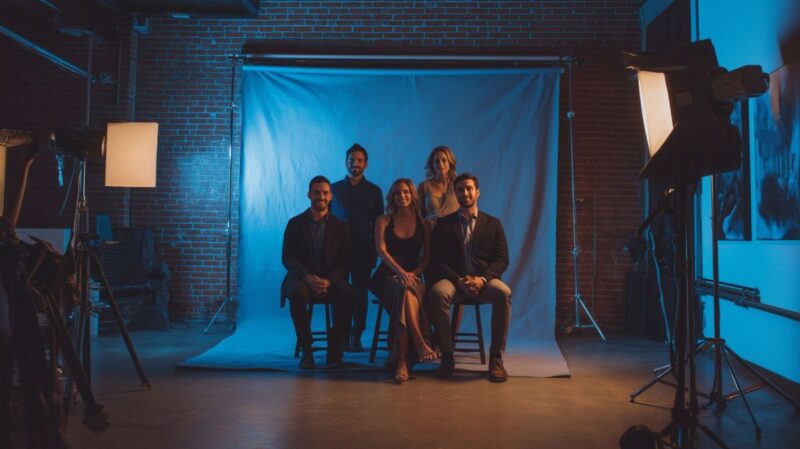
Group photos require harmony without uniformity. Coordination should appear effortless and cohesive, not rehearsed.
A shared palette with subtle variation gives a professional yet natural effect.
Choose one standout color supported by soft neutrals, allowing every individual to complement the others without blending into sameness.
When coordinating a group photo session, remember:
- Pick complementary shades that work together naturally.
- Avoid identical outfits like matching white shirts and jeans.
- Introduce one highlight color and support it with neutral pieces.
Visual balance through color coordination helps the group look unified while still expressing individuality.
Fabrics & Textures: What Works Best on Camera
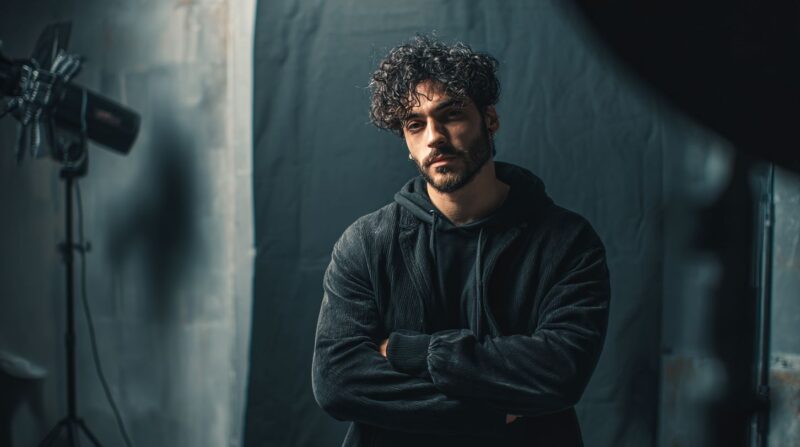
Fabric choice can dramatically influence how your outfit looks in a photography session and under lighting.
Certain materials photograph more smoothly, while others can create glare, distortion, or wrinkles that distract from your expression.
Choosing the right fabric type ensures clean, polished images with depth and texture.
Fabrics to Choose
Matte fabrics are the safest and most flattering for professional photography.
They absorb light evenly, preventing unwanted shine and reflection. Slightly textured materials add subtle depth without stealing focus.
Comfort also plays a major role, choose fabrics that feel breathable and season-appropriate to keep you relaxed throughout the shoot.
Reliable fabric options include:
- Cotton and soft blends for comfort and breathability.
- Wool for cooler seasons or formal portraits.
- Knits or brushed fabrics for light texture and dimension.
Combining visual softness with practical comfort results in timeless, camera-friendly attire.
Fabrics to Avoid
Certain materials can cause visual issues in photos due to how they reflect or distort light.
Shiny fabrics like satin or silk catch glare and create uneven brightness, while tight patterns such as pinstripes or checks can distort on digital sensors.
Linen tends to wrinkle easily, making it a high-maintenance option.
Avoid these problem fabrics and textures:
- Reflective materials like satin, silk, or sequins.
- Small repetitive patterns that cause distortion.
- Linen or easily wrinkled materials unless perfectly pressed.
Smooth, matte, and structured fabrics guarantee a refined look that stays professional throughout the session.
The Bottom Line
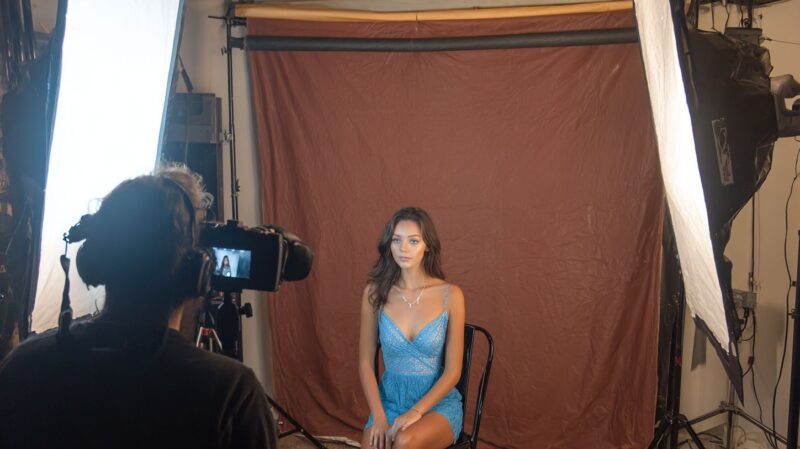
Confidence, comfort, and authenticity create powerful professional portraits.
Allow your personality to shine while maintaining a polished appearance.
Trust your photographer’s expertise—they can provide valuable input on outfit coordination and lighting adjustments. When uncertain, prepare a few wardrobe options and ask for feedback in advance.
Feeling comfortable in your choices ensures photos that reflect the best version of you.
Dave Mustaine is a business writer and startup analyst at Sharkalytics.com. His articles break down what happens after the cameras stop rolling, highlighting both big wins and behind-the-scenes challenges.
With a background in entrepreneurship and data analytics, Dave brings a sharp, practical lens to startup success and failure. When he’s not writing, he mentors founders and speaks at entrepreneur events.


